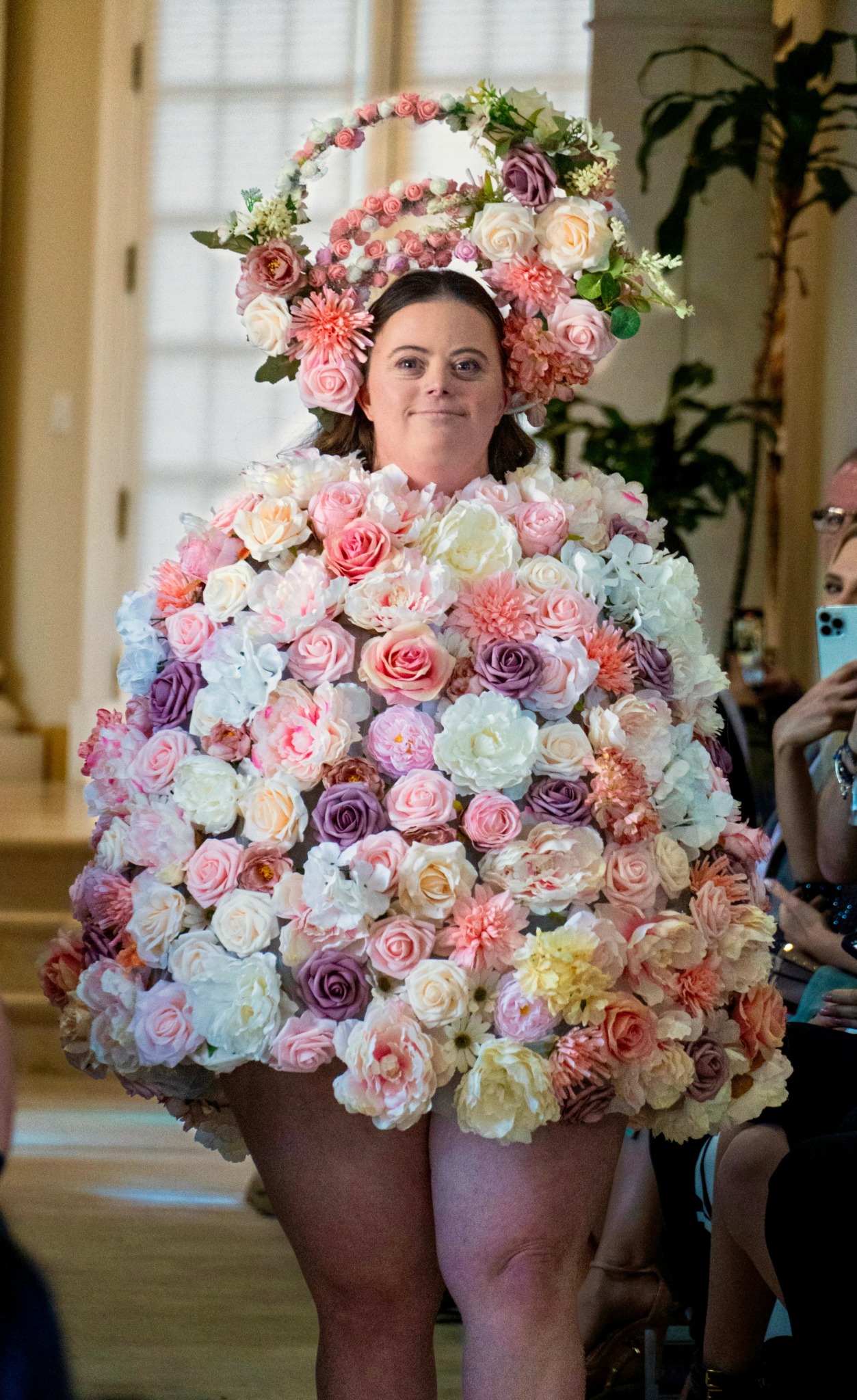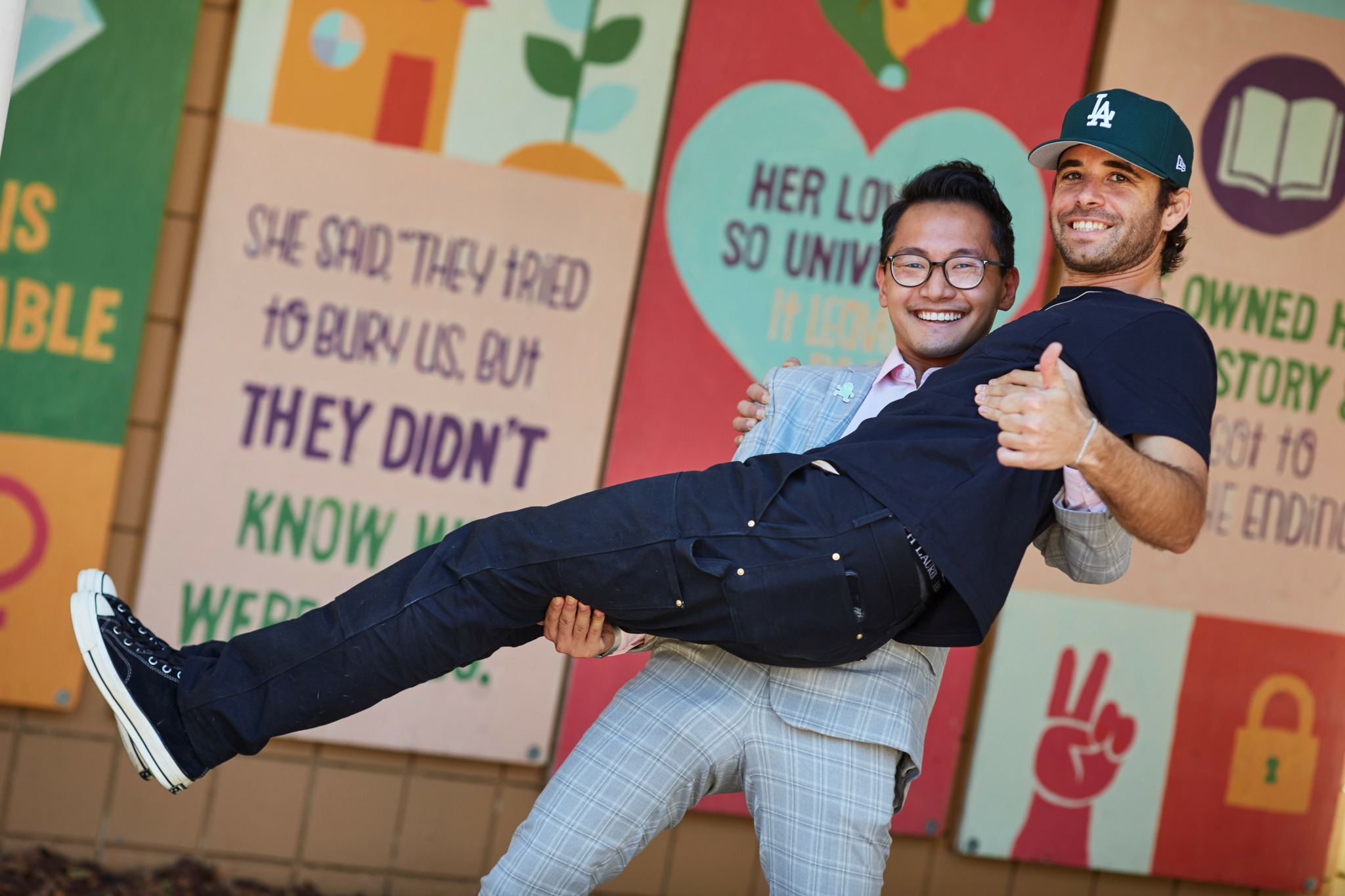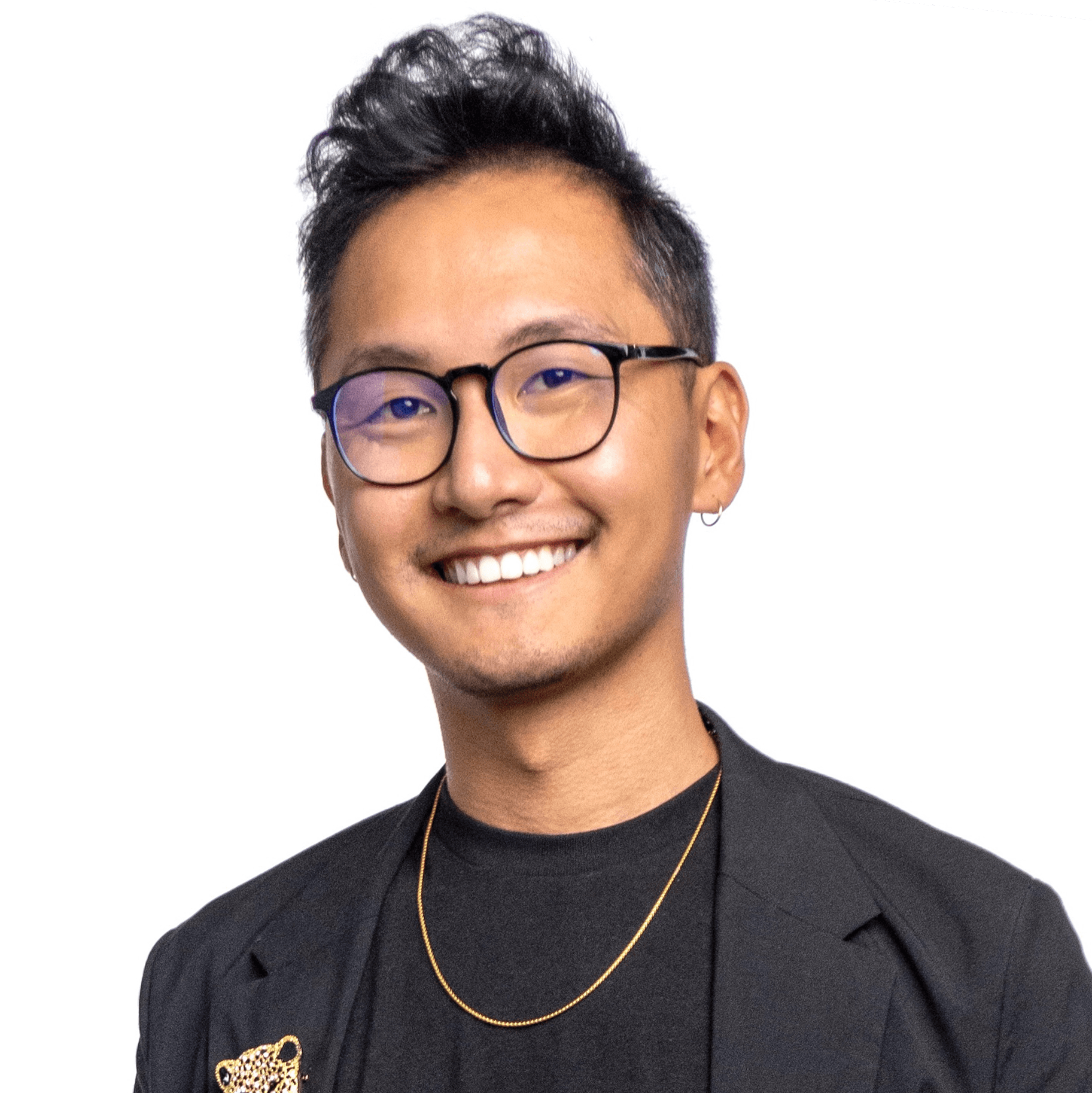We’re excited to introduce you to the always interesting and insightful Kyle Denman. We hope you’ll enjoy our conversation with Kyle below.
Kyle, looking forward to hearing all of your stories today. Do you feel you or your work has ever been misunderstood or mischaracterized? If so, tell us the story and how/why it happened and if there are any interesting learnings or insights you took from the experience?
Absolutely, my identity as an Asian, gay, adopted kid, and an artist has often shaped how I’m perceived and sometimes misunderstood, both in my personal life and my work.
Growing up, I felt like I was constantly balancing multiple identities—being raised in a predominantly white environment, I struggled with a sense of belonging as an Asian person. I was often seen as “different” and didn’t fully connect with either my adopted family’s culture or the culture of my biological heritage. That sense of being in-between was something I carried with me into my work as a designer.
As a gay man, I also faced some challenges—particularly early on in my career—where people assumed that being gay might pigeonhole me into a certain type of creativity or design style. For a while, I worried that people would expect me to conform to stereotypes about what “gay” fashion is, but over time, I realized that my sexuality has shaped my perspective on inclusivity and diversity, which are central to the work I do today.
Being adopted added another layer of complexity to my identity. It often meant I had to navigate the space between being “accepted” into a community while also feeling a deep curiosity about my roots. In a way, it sometimes felt like I was looking for validation from multiple places, and I used my work to reflect that inner tension—the feeling of wanting to belong while also wanting to stand out. My designs often express that sense of duality and embracing differences as strengths rather than weaknesses.
At times, my work has been misunderstood, especially when I first started as a designer. People would often expect me to fit into a certain mold because of my background and culture. But I quickly realized that being “misunderstood” wasn’t something to fear; it was actually a chance for me to create work that was deeply personal and authentic. I wanted to use my work to push boundaries, not just to reflect who I was, but also to challenge others to see fashion as a reflection of identity, culture, and expression in all its complexity.
One of the biggest learnings I took from these experiences is that misunderstandings are often born from the lack of awareness or exposure to something different. I’ve learned to embrace the idea that my work may not always be immediately understood by everyone, and that’s okay. The important thing is that I’m creating something that is true to who I am—a creative, a person of color, a member of the LGBTQ+ community, and an adopted individual who is constantly evolving. The more I own my complexity, the more my audience can see the depth and authenticity in what I do.
To add to that, I think another part of my identity that’s often misunderstood is this idea of being “weird.” Growing up, I was always told I was a bit different—whether it was my personality, my interests, or the way I approached things. Being “weird” was something that I used to feel self-conscious about, especially when I didn’t see many people like me in the spaces I wanted to be part of. But as I got older, I learned to embrace my “weirdness” as a form of freedom. It’s what sets me apart from others in the creative world. It’s the quirky, unexpected ideas that pop into my head and fuel my designs.
I’m not just “different” for the sake of being different, but because I’m not afraid to break away from the norm and embrace all the things that make me unique. I’ve learned that being weird doesn’t mean you’re out of place; it means you’re authentic. My weirdness is my strength—it’s where my creativity comes from, and it’s something that connects with people who feel like they don’t fit into the boxes society tries to put them in. The best part about being “weird” is that it’s also liberating—it’s a reminder that there’s no one way to be, no one mold you have to fit. And in a world where everyone is trying to be the same, I think that’s a beautiful thing.
So, to anyone who feels “weird” or out of place, I say embrace it. It’s your unique perspective that the world needs. In fact, weird is what makes you special, and it’s the key to creating work that is truly innovative. I’m proud of the fact that I’ve learned to own it and let that “weirdness” shine through in everything I do.
Ultimately, I’ve realized that my identity, in all its facets, is my greatest strength. My creativity comes from a place of understanding what it feels like to be different, and I’ve channeled that into my designs in a way that makes people feel seen and celebrated, no matter their background. Being misunderstood isn’t something to shy away from—it’s an opportunity to define who you are on your own terms, and that’s exactly what I’m doing with my work.
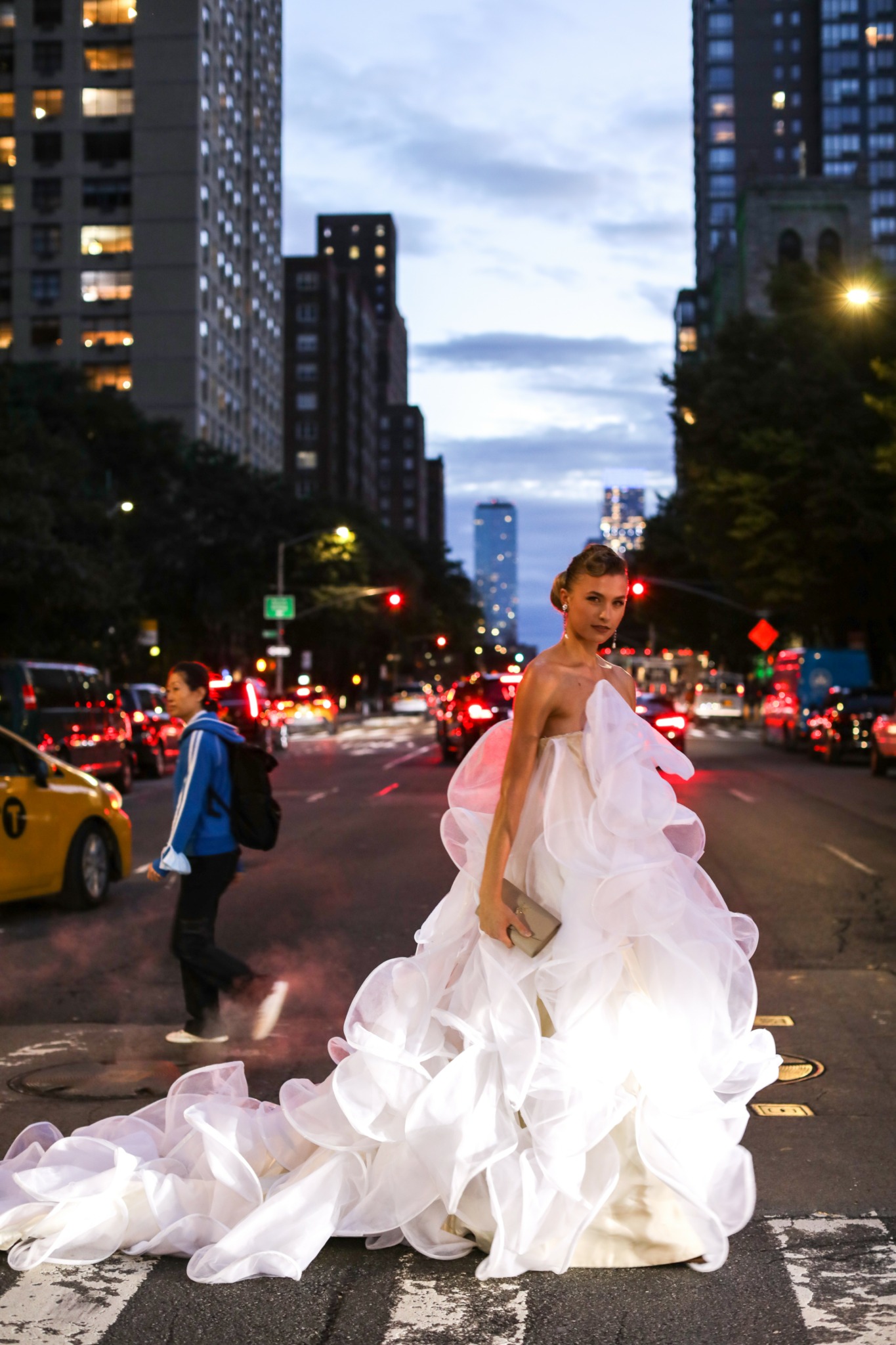
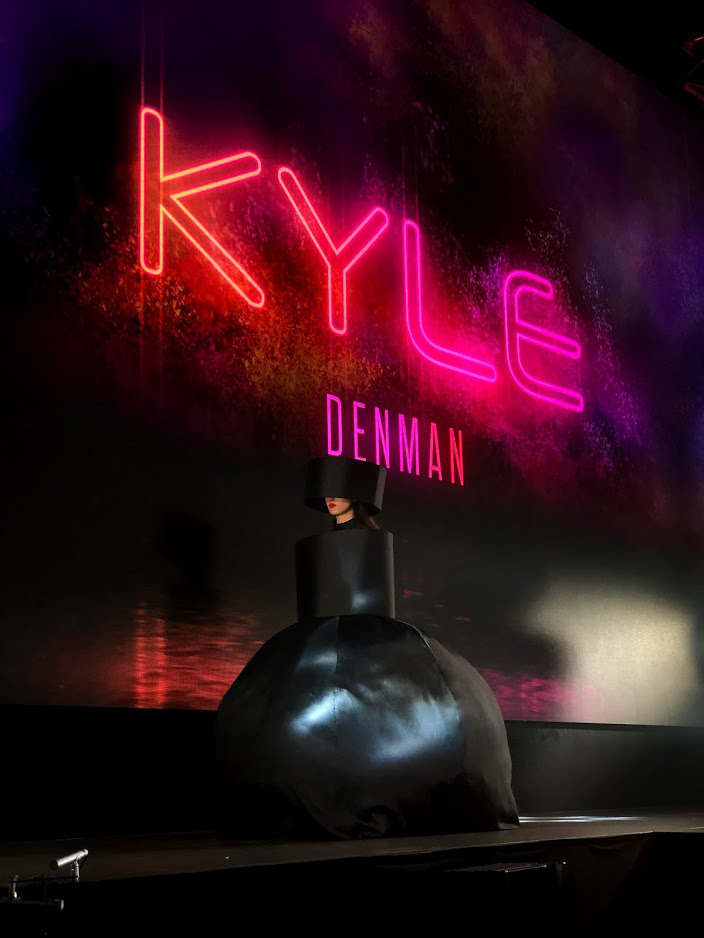
As always, we appreciate you sharing your insights and we’ve got a few more questions for you, but before we get to all of that can you take a minute to introduce yourself and give our readers some of your back background and context?
My personal experiences with identity, culture, and belonging have deeply influenced my work, making it both introspective and community-oriented.
I got into the fashion industry later than some—my initial studies were in political science, but I realized early on that my true calling was in artistry and creativity. Fashion, to me, is not just about clothing; it’s a platform for storytelling, for self-expression, and for shaping culture. Over the years, I’ve honed my skills and established my brand, creating designs that are not only visually striking but also deeply rooted in my experiences and values.
At the heart of my work, I design with a focus on inclusivity. I work with models of all sizes, genders, and abilities, using fashion as a tool to break down barriers and challenge conventional beauty standards. I aim to create pieces that allow people to feel seen and empowered, no matter their background or physical appearance. I also strive to ensure that my designs are both functional and artistic, with an emphasis on the details that bring a piece of clothing to life—whether it’s the fabric choices, the construction, or the way it drapes and moves.
One of the things that sets me apart is my commitment to storytelling through my work. Fashion can be a powerful medium for communication, and I aim to use my designs to tell stories—whether it’s about identity, culture, or social issues. This mindset is part of what led me to become the Executive Director of Arts Bridging the Gap, a nonprofit focused on creating access to arts and culture for under-resourced communities in Los Angeles. Through this platform, I’m able to take my passion for fashion and merge it with my desire to give back, creating impactful art installations and murals that engage communities and start conversations.
I’m most proud of the recognition I’ve received, including being named to the Forbes 30 Under 30 list in 2023 and winning International Fashion Designer of the Year in 2021. But more than accolades, I’m proud of the impact I’ve had on the people who wear my designs and the communities I’ve worked with. My focus has always been on authenticity—being true to myself and encouraging others to do the same through the work I create.
For me, effort beats talent every time—a motto that I live by. I believe that perseverance, hard work, and a willingness to learn and adapt are what truly lead to success, not just raw talent. This mindset has shaped my career and helped me navigate challenges, both personally and professionally.
When it comes to what I want people to know about my work and my brand, I want them to understand that I am driven by a mission: to create clothing and art that celebrates individuality, promotes inclusivity, and inspires confidence. I believe in the power of creativity to make a difference, and I strive to reflect that in everything I do. I want my clients, followers, and fans to know that my designs are not just about fashion—they’re about fostering a deeper connection to oneself and the world around us. My work is a testament to the power of embracing who you are and showing up authentically, in all your complexity.
I’m not just designing clothes—I’m creating art that tells stories, builds communities, and helps people feel confident and beautiful in their own skin. Whether it’s through fashion, the murals of Arts Bridging the Gap, or my broader creative vision, I’m here to make a lasting impact. And I believe that the journey of self-expression and empowerment, through creativity, is something everyone can—and should—embrace.
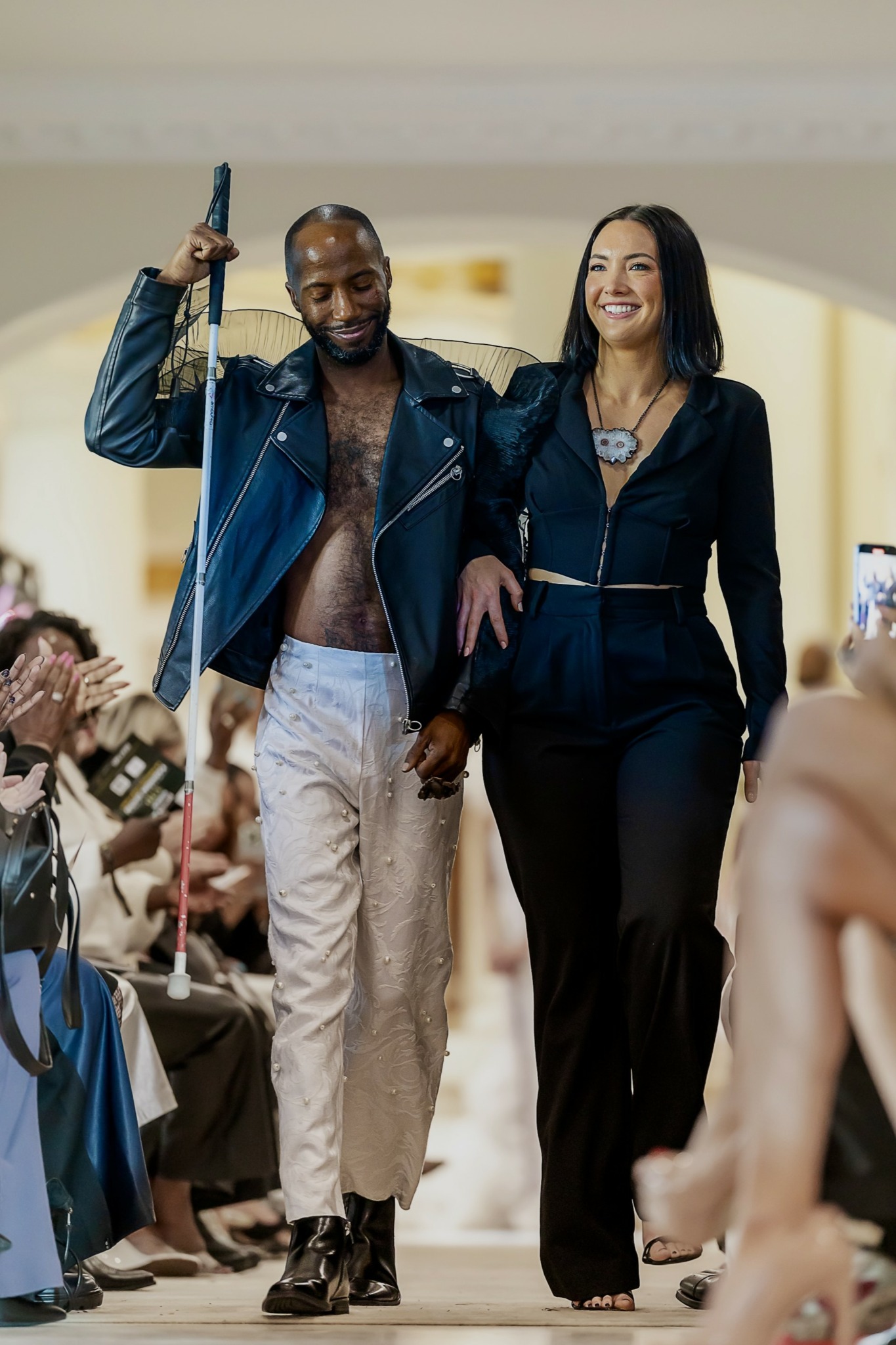
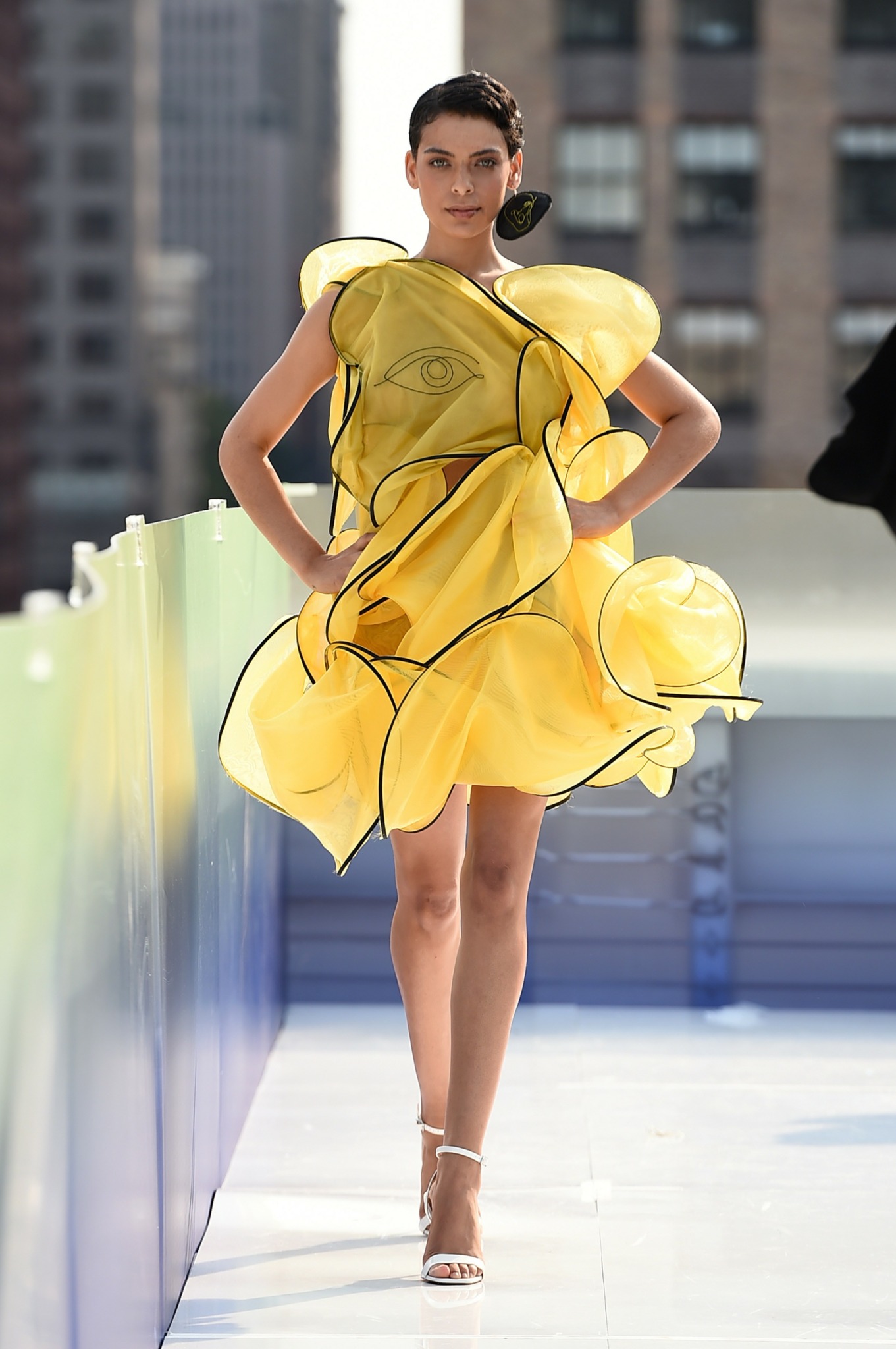
What do you think is the goal or mission that drives your creative journey?
Absolutely—my creative journey is deeply driven by a mission of inclusivity, self-expression, and cultural impact. My experiences have shaped my desire to create work that reflects the complexity and diversity of identity, while also empowering people to embrace their true selves. Fashion, for me, is a medium for storytelling—a way to explore personal narratives and communicate powerful messages of belonging, confidence, and self-worth.
The core mission behind my work is to disrupt the narrow, traditional definitions of beauty and fashion by creating designs that speak to a broader range of people. I want to challenge the idea that fashion only belongs to a certain type of body, gender, or background. By working with models of all sizes, genders, and abilities, and by designing with inclusivity in mind, I hope to create pieces that not only look beautiful but also make people feel seen and heard.
At the heart of my creative journey is a commitment to celebrating individuality. The goal is to show that authenticity and diversity are powerful forces, and that each person’s unique story deserves to be expressed and celebrated through their clothing and the art they wear. Whether through the fashion I design or through my work with Arts Bridging the Gap, I aim to use creativity to break down barriers and foster connection, not just within communities but also between individuals from different walks of life.
Ultimately, I want my work to spark conversations about identity, representation, and the way we define beauty. I want to leave a mark on the world—not just through the designs I create, but through the positive change I hope to inspire. My mission is to make fashion more accessible, diverse, and reflective of the real world, and to remind people that there is no single “right” way to look, to dress, or to be. Self-expression and creativity should be celebrated in all their forms, and that’s what drives me every day.
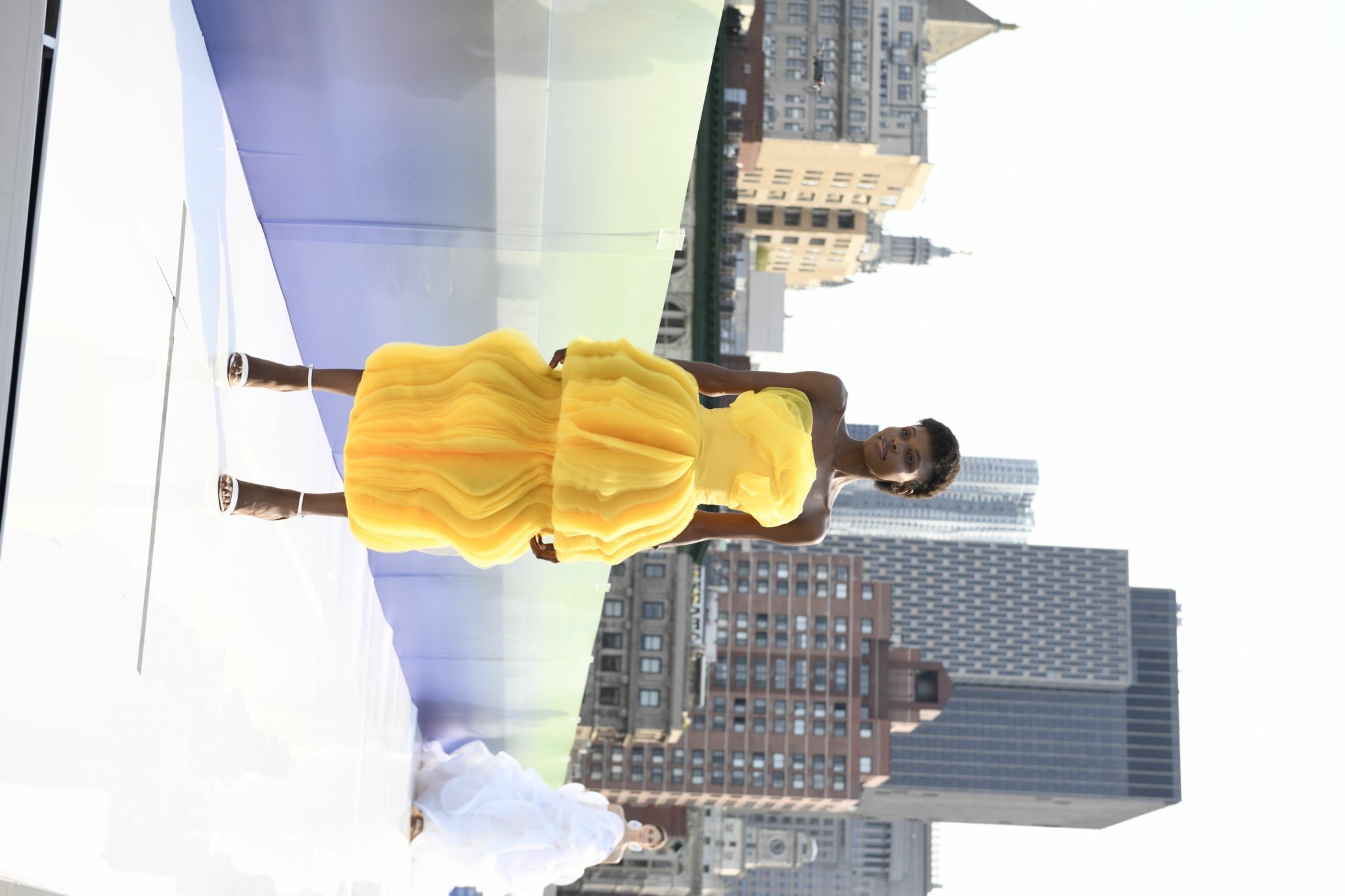
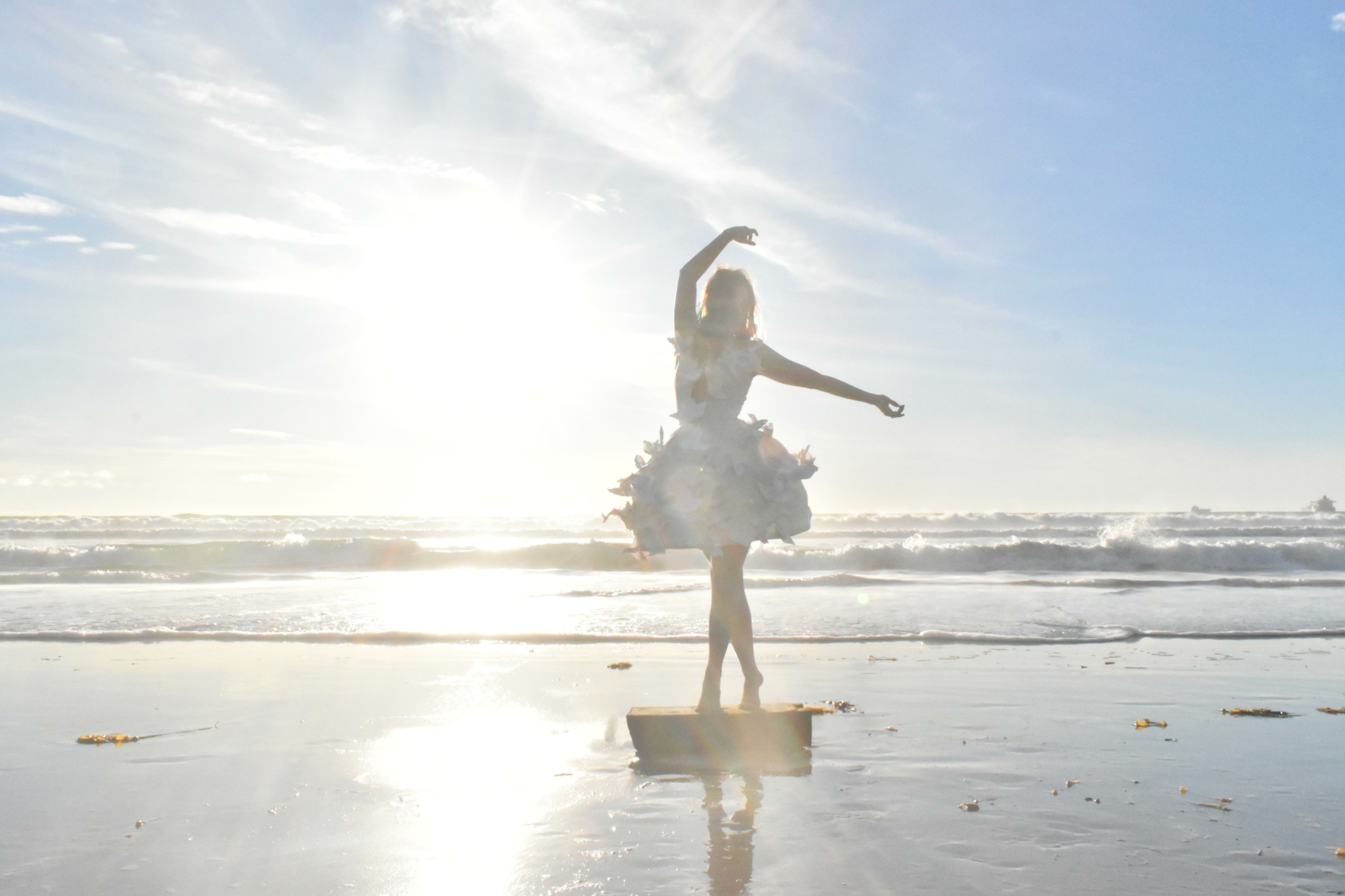
What can society do to ensure an environment that’s helpful to artists and creatives?
To truly support artists, creatives, and cultivate a thriving creative ecosystem, society needs to prioritize access, inclusivity, and sustainability. Creativity is too often seen as a luxury or an afterthought, when in reality, it is fundamental to our culture, identity, and economy. One of the most impactful ways society can support artists is by investing in access and education. Creative education should be prioritized in schools and community programs, especially in underserved areas, to ensure that all individuals have the opportunity to explore their creative potential, regardless of their financial background. Providing scholarships, mentorship programs, and grants can help bridge the gap for those who may not have access to formal training or the necessary resources.
Inclusivity and representation are also crucial to the health of the creative ecosystem. Creativity flourishes when diverse voices are heard and celebrated. For the arts to truly thrive, we need to ensure that artists from all backgrounds, particularly those from marginalized groups—whether artists of color, LGBTQ+ individuals, or those with disabilities—have platforms and opportunities. Promoting inclusivity in the arts not only broadens the scope of artistic expression but also helps create a society where more people can see themselves reflected in the work. When different perspectives and experiences are embraced, art becomes more dynamic and relatable, ultimately strengthening the connections people feel with it.
Another key area for support is creating sustainable opportunities for artists. Many creatives struggle to balance their artistic work with the financial realities of life. Society can play a huge role in making creative careers financially viable by fostering sustainable income models for artists, such as fair wages, grants, and funding opportunities. Public-private collaborations can be particularly effective in connecting artists with projects and spaces that allow them to showcase their work while being compensated fairly. The work of organizations like Arts Bridging the Gap, which connects artists with public art installations and opportunities, demonstrates how public investment in the arts can create visible, lasting impacts. By recognizing the economic value of the arts and creating pathways for artists to thrive, society can help make creative work a sustainable career choice.
Society also needs to promote the intrinsic value of creative work. Art should not be seen merely as a commodity, but as a vital tool for communicating societal issues, fostering empathy, and inspiring change. This means recognizing the role that artists play in shaping culture, challenging societal norms, and influencing the direction of social conversations. By supporting and investing in the arts as a central pillar of our social infrastructure, society can elevate art to the level of other essential sectors like education and healthcare. Through this lens, the arts are not just valuable for their aesthetic or entertainment purposes—they are essential for the enrichment of society as a whole.
Additionally, fostering collaboration among artists is key to nurturing creativity. Some of the most exciting work comes from collaborative efforts, where creatives from different backgrounds and disciplines come together to share ideas, experiment, and learn from one another. Society should create spaces—both physical and digital—where collaboration can flourish, such as through artist collectives, mentorship programs, and collaborative workshops. Providing shared resources can also help artists access the tools and networks they need to succeed, removing barriers that often limit creativity.
Finally, society must make a concerted effort to celebrate and amplify the work of artists. Public recognition of creative work—whether through exhibitions, festivals, media coverage, or online platforms—helps elevate the visibility and legitimacy of art in all its forms. When artists receive recognition, it not only validates their work but also encourages a broader appreciation for the social impact that art can have. By normalizing the idea that art is valuable, not just for its entertainment potential but for its capacity to shape and challenge society, we create an environment where the creative community can thrive.
In short, a thriving creative ecosystem requires collective support, recognition of the true value of art, and a commitment to fostering a space where diverse voices can be heard. When society invests in creativity, whether through education, sustainable opportunities, or a celebration of diversity, we build a stronger cultural and economic foundation. Ultimately, supporting artists and creatives is about understanding that art is not a luxury—it’s an essential part of our collective future.
Contact Info:
- Website: https://www.kyledenmanfashion.com/
- Instagram: https://www.instagram.com/thekyledenman/
- Youtube: https://www.youtube.com/watch?v=7UNChTbP5w4&t=4s
- Other: email: [email protected]
